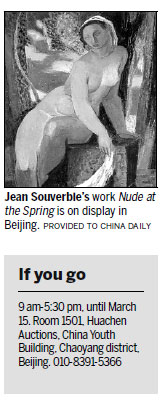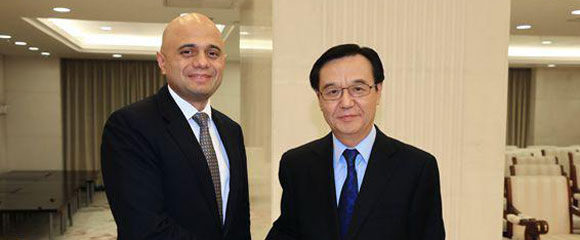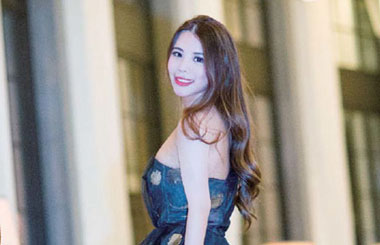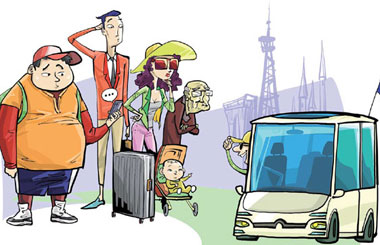View of European influence on Chinese modern masters
Updated: 2016-03-08 08:08
By Lin Qi(China Daily)
|
|||||||||
The modernism movement nurtured a number of Chinese artists who studied and lived in France in the early 20th century, such as Lin Fengmian and Xu Beihong. Many of them, after returning home, spearheaded the modernization of Chinese art and education and the influence endures to date.
French Art Spring Salon, an ongoing exhibition celebrates the diversity of art scenes of that period with a display of paintings created by many important figures of European modern art, including Emile Othon Friesz, an artist of the Fauvist movement, and Remy Hetreau.
Beijing-based Huachen Auctions is holding the art show in its premises, catering to mainland collectors' emerging interest in Western art.
"A growing number of Chinese today will visit museums and art galleries when traveling abroad, such as the Louvre and Centre Pompidou," Liu Ying, director of Huachen Auctions' modern and contemporary Chinese art department, tells China Daily.
After entering the mainland market, international auctioneers Christie's and Sotheby's have been staging auctions and exhibitions of Western art.
She says these factors combined keep people's interest alive as they want to know more about Western art and how to collect it.
Although some top-notch collectors like Liu Yiqian and Wang Zhongjun have bought pricey Western art for years, Liu says, for the majority of buyers the trend to collect Western art has just started.
Liu says through this exhibition they hope to understand more about what kinds of works will attract potential buyers.
Philippe Cinquini, a Shanghai-based French curator who engages in art exchange programs, was invited to give a speech on the displayed artworks.
He tells China Daily that Chinese audiences need to overturn the mental barrier that they lack adequate academic knowledge to appreciate Western art.
Cinquini curated Masters and Masters, an exhibition juxtaposing paintings of Xu and his teachers at the distinguished National School of Fine Arts in Paris, in 2014. The exhibition toured Beijing, Shanghai and Zhengzhou in Central China's Henan province, drawing huge crowds of visitors.
He says Chinese visitors were very intelligent in finding the connections between Eastern and Western art, through Xu's paintings they are familiar with.
French Art Spring Salon relates to the same intimate links that show the development of Chinese and European art.
A typical case is Jean Souverbie, whose Chinese apprentice at the Paris college, Wu Guanzhong, mentioned in a memoir that Souverbie was a highly respected teacher who shaped his values of artistic creation and life. Of the two Souverbie paintings on show in Beijing, one is Nude at the Spring.
Cinquini says according to Wu's memoir, Souverbie once said in a drawing class that he saw the Notre-Dame Cathedral in the nude model. That explains why he structured the female body in a unique way in Nude at the Spring.
In his early years, Wu painted many nudes but none of them has survived and therefore, Souverbie's nude may serve as "a mirror" through which people can picture the style of Wu's past works, Cinquini adds.
Andre Maire's painting at the same show, displays the Western painters' mature approach to interpreting Oriental motifs in the early 20th century. Cinquini says this painting style had an impact on the Chinese painter Lin Fengmian.
Lin's works feature smooth curves and a simple palette, bringing an Eastern elegance to his oil paintings.
Lin, lesser-known to mainland collectors for decades, has become a market favorite in recent years because of auctioneers' promotional activities.
linqi@chinadaily.com.cn

(China Daily 03/08/2016 page20)
Today's Top News
Lavrov, Kerry hail progress in Syrian ceasefire
PM Fico's Smer party leads Slovak election: exit poll
Britain to take lead in promoting EU-China trade talks
Chinese brands make a mark in Europe
Expanding footprint
Spanish Princess testifies in tax fraud trial
Women driving growth of O2O in China
Trump, Clinton scoop up key wins on 'Super Tuesday'
Hot Topics
Lunar probe , China growth forecasts, Emission rules get tougher, China seen through 'colored lens', International board,
Editor's Picks

|

|

|

|

|

|






